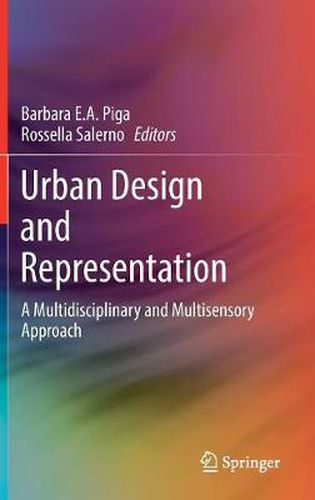Readings Newsletter
Become a Readings Member to make your shopping experience even easier.
Sign in or sign up for free!
You’re not far away from qualifying for FREE standard shipping within Australia
You’ve qualified for FREE standard shipping within Australia
The cart is loading…






This title is printed to order. This book may have been self-published. If so, we cannot guarantee the quality of the content. In the main most books will have gone through the editing process however some may not. We therefore suggest that you be aware of this before ordering this book. If in doubt check either the author or publisher’s details as we are unable to accept any returns unless they are faulty. Please contact us if you have any questions.
This book explores how environmental urban design can benefit from established and emerging representation and simulation techniques that meet the need for a multisensory approach. Bringing together contributions by researchers and practicing professionals that approach the topics discussed from both theoretical and practical perspectives and draw on case-study applications, it addresses important themes including digital modeling, physical modeling, mapping, and simulation.
The chapters are linked by their relevance to simple but crucial questions: How can representational solutions enhance an urban design approach in which people’s well-being is considered the primary goal? How can one best represent and design the ambiance of places? What kinds of technologies and tools are available to support multisensory urban design? How can current and future environments be optimally represented and simulated, taking into account the way in which we experience places? Shedding new light on these key questions, the book offers both a reference guide for those engaged in applied research, and a toolkit for professionals and students.
$9.00 standard shipping within Australia
FREE standard shipping within Australia for orders over $100.00
Express & International shipping calculated at checkout
This title is printed to order. This book may have been self-published. If so, we cannot guarantee the quality of the content. In the main most books will have gone through the editing process however some may not. We therefore suggest that you be aware of this before ordering this book. If in doubt check either the author or publisher’s details as we are unable to accept any returns unless they are faulty. Please contact us if you have any questions.
This book explores how environmental urban design can benefit from established and emerging representation and simulation techniques that meet the need for a multisensory approach. Bringing together contributions by researchers and practicing professionals that approach the topics discussed from both theoretical and practical perspectives and draw on case-study applications, it addresses important themes including digital modeling, physical modeling, mapping, and simulation.
The chapters are linked by their relevance to simple but crucial questions: How can representational solutions enhance an urban design approach in which people’s well-being is considered the primary goal? How can one best represent and design the ambiance of places? What kinds of technologies and tools are available to support multisensory urban design? How can current and future environments be optimally represented and simulated, taking into account the way in which we experience places? Shedding new light on these key questions, the book offers both a reference guide for those engaged in applied research, and a toolkit for professionals and students.